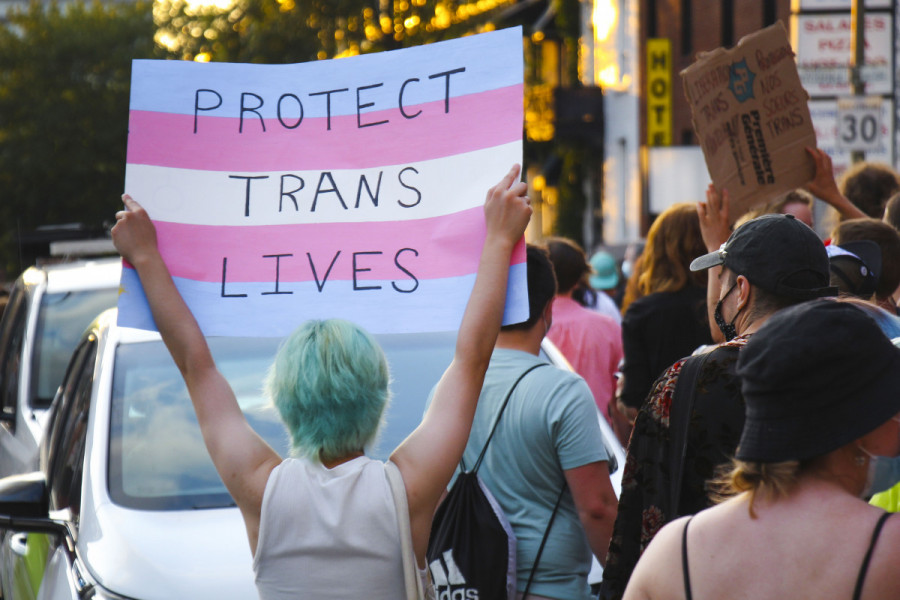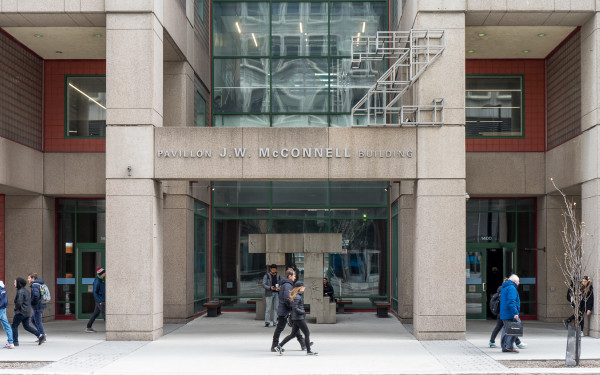This is not new information: Enforcing gender roles in schools hurts children
If we’re going to talk about indoctrination in schools, let’s use some critical thinking
On Sept. 20, thousands of people nationwide participated in the One Million March for Children protest against inclusive LGBTQIA2S+ education and sexual education policies in schools.
The homophobic rallies were met with fierce counter-protests. As demonstrators hurled slurs at trans people defending their community, a larger discussion on schools’ gender identity policies was lurking beneath the surface.
Blatant transphobia and homophobia aside, these protests are linked to recent policies in New Brunswick and Saskatchewan that would require children under 16 to obtain parental consent before being referred to by their chosen names or preferred pronouns at school.
While these policies are directly endangering trans and non-binary children who do not feel safe revealing their gender identities at home, they also reveal the larger nature of where so-called gender ideology is really coming from.
In his 1968 book Life in Classrooms, American sociologist Philip W. Jackson coined the term “hidden curriculum.” It refers to how schools indirectly teach children to give up some of their independence and control to those in charge and hide their true selves and desires for the benefit of the group.
Historically, schools have been indirectly moulding young boys and girls to conform to prescribed behavioural norms based on their assigned sex at birth. This conformity has repercussions, as it discourages children from embracing their authentic selves, reinforces gender inequalities and discourages diversity.
Gender roles in society refer to the expectations regarding how we should behave, talk, dress, and what we should like based on the sex we are assigned at birth. Essentially, the hidden curriculum indirectly teaches boys and girls to hide their true selves and instead conform to society’s expectations based on their assigned sex at birth. This process of learning about gender roles comes from a phenomenon known in sociology as gender socialization, in which children are confronted with the difference between “boy things” and “girl things” from the moment they are born.
Little boys and girls have been and continue to be shamed for enjoying things that are considered inappropriate for their gender, and that is a problem. According to a 2017 United Nations study, gender socialization “contributes to gender inequalities in education, employment, income, empowerment, and other significant outcomes of well-being during adolescence and later in life.”
The hidden curriculum is a way for children to learn about conforming to the role society has designated for them. And policies like the ones recently implemented by the New Brunswick and Saskatchewan governments are enforcing this hidden curriculum about gender roles. These policies are telling children that it is not safe to break the mould and be themselves.
In order to thrive, children must be exposed to unbiased curricula and textbooks that show them that it is okay—and good!—to be who they want to be, and not to be constrained by archaic gender roles.
A 2018 pamphlet by the Institute of Physics states that biases and stereotypes create unspoken barriers for children, and that “simply informing students that they are free to choose, without addressing these barriers, is not sufficient.” In other words, children need to be taught that gender stereotypes still exist and that it is okay to not fit the mould and just be themselves.
The recent protests surrounding LGBTQIA2S+ education and sexual education policies in schools exemplify how deeply entrenched these gender roles still are in Canada. Supporters of these policies and the One Million March for Children movement believe that teaching children comprehensive sex education and promoting awareness and acceptance of LGBTQIA2S+ individuals is an infringement on parental education rights.
But real indoctrination is governments intentionally not providing children with accurate sex education and LGBTQIA2S+ awareness, leaving them unprepared to navigate these aspects of life. Children deserve a well-rounded education that equips them with the knowledge they need to make informed decisions about their own health, relationships and society.
Those who do not support these policies have a stronger argument in the infringement of a child’s right and freedom to be themselves. Schools should be a safe place for children regardless of their gender identity.
Those who support these harmful policies are influenced by the gender norms they have learned through gender socialization and the hidden curriculum, and thus varying too far outside of these norms is seen as a threat to the fabric of society. In contrast, many of those who oppose these policies have deconstructed these gender norms and are much more understanding of those who challenge the status quo of gender.
As children encounter increased transphobic rhetoric at school, it is important to remember the hidden curriculum and its role in perpetuating gender roles.
There seems to be allegations coming from supporters of these gender policies that trans people are deeply infiltrating the education system and corrupting young minds—which is simply not true. The process of deconstructing gender roles and teaching children to be their authentic selves simply comes with acknowledging that gender does not define who you are.
To create a more accepting and inclusive society, we need to be careful about the messages we are sending children in the adoption of reactionary and anti-queer policies on gender in school. Because right now, these policies are teaching children that it is not safe to be themselves at school.
This article originally appeared in Volume 44, Issue 3, published October 3, 2023.


_600_832_s.png)


_600_375_s_c1.png)

_(1)_600_375_s_c1.png)